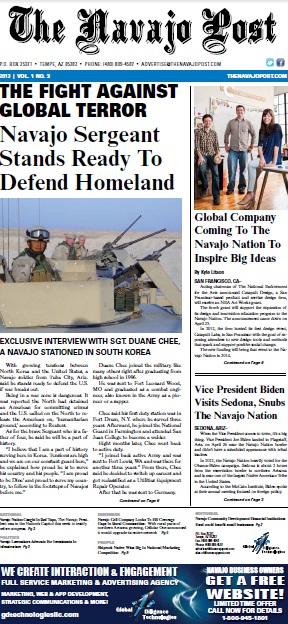Navajo Nation
The History
The Navajo Nation extends into the states of Utah , Arizona and New Mexico , covering over 27,000 square miles of unparalleled beauty. Diné Bikéyah, or Navajoland, is larger than 10 of the 50 states in America.
Visitors from around the world are intrigued and mystified when they hear the Navajo language – so, too, were the enemy during World War II. Unknown to many, the Navajo language was used to create a secret code to battle the Japanese. Navajo men were selected to create codes and serve on the front line to overcome and deceive those on the other side of the battlefield. Today, these men are recognized as the famous Navajo Code Talkers, who exemplify the unequaled bravery and patriotism of the Navajo people.
Navajo Nation Government
Today, the Navajo Nation is striving to sustain a viable economy for an ever increasing population that now surpasses 250,000. In years past, Navajoland often appeared to be little more than a desolate section of the Southwest, but it was only a matter of time before the Navajo Nation became known as a wealthy nation in a world of its own. The discovery of oil on Navajoland in the early 1920′s promoted the need for a more systematic form of government.
In 1923, a tribal government was established to help meet the increasing desires of American oil companies to lease Navajoland for exploration. Navajo government has evolved into the largest and most sophisticated form of American Indian government. The Navajo Nation Council Chambers hosts 88 council delegates representing 110 Navajo Nation chapters.
See the Navajo Nation government in action as the 24 Council delegates (representing 110 Navajo Nation chapters, or communities) discuss critical issues and enact legislation to determine the future of the Navajo people. Reorganized in 1991 to form a three-branch system (executive, legislative and judicial), the Navajos conduct what is considered to be the most sophisticated form of Indian government. While the Council is in session, you’ll likely hear delegates carry on the tradition of speaking in Navajo, providing a perfect example of how the Navajo Nation retains its valuable cultural heritage while forging ahead with modern progress. When the Council is not in session, legislative work is done by 12 “standing committees” of the Council. Inside the circular Council Chambers, the walls are adorned with colorful murals that depict the history of the Navajo people and the Navajo way of life. For more info about tours, call 928-871-6417 or write to P.O. Box 1400 , Window Rock, AZ 86515. This information was provided from the Navajo Nation.














